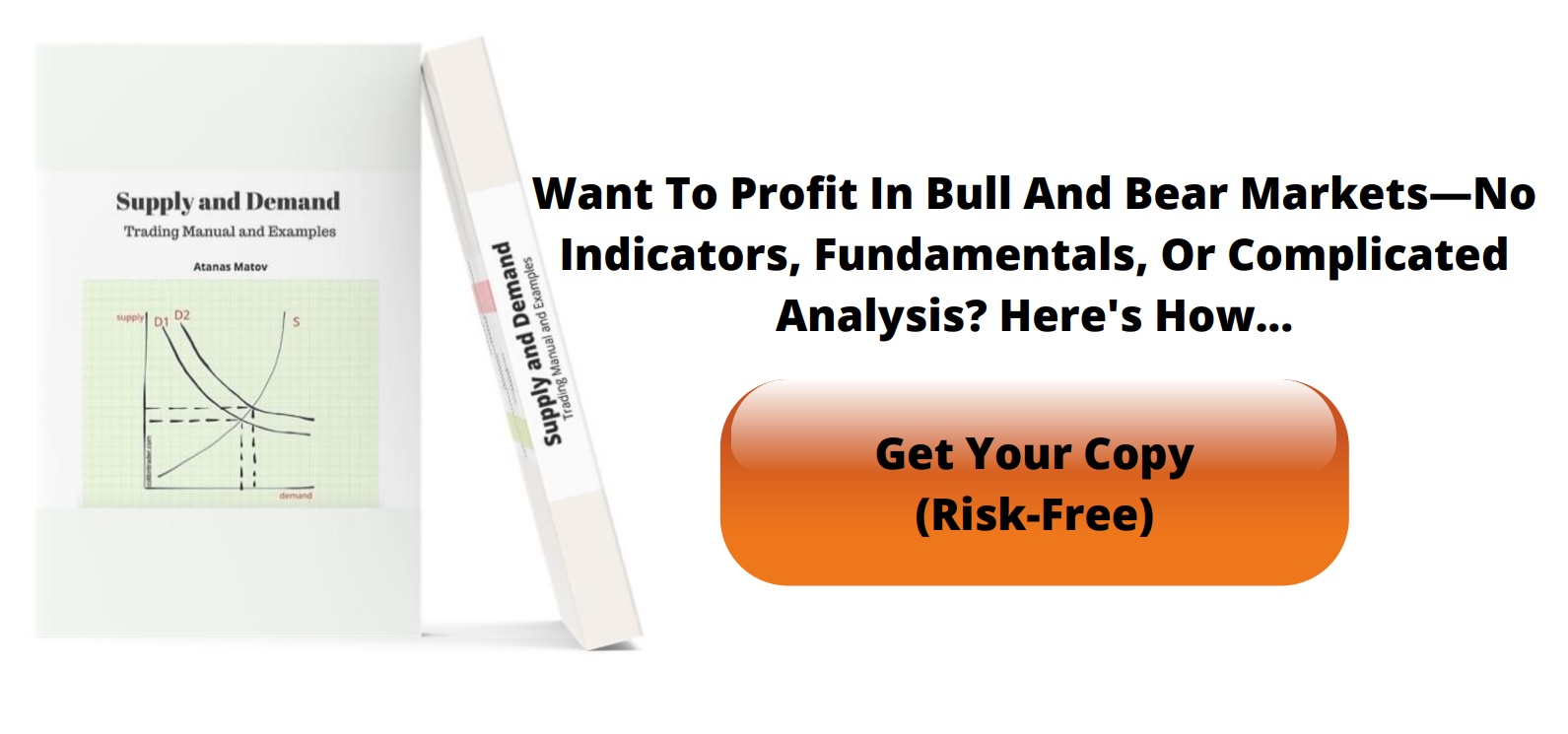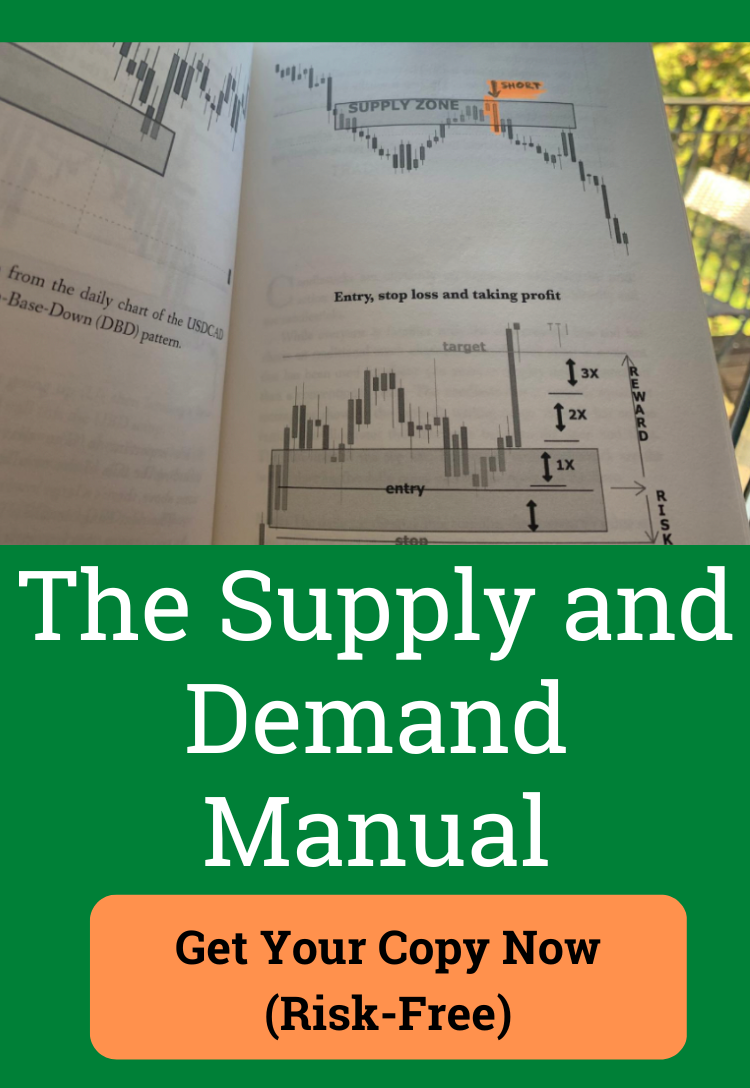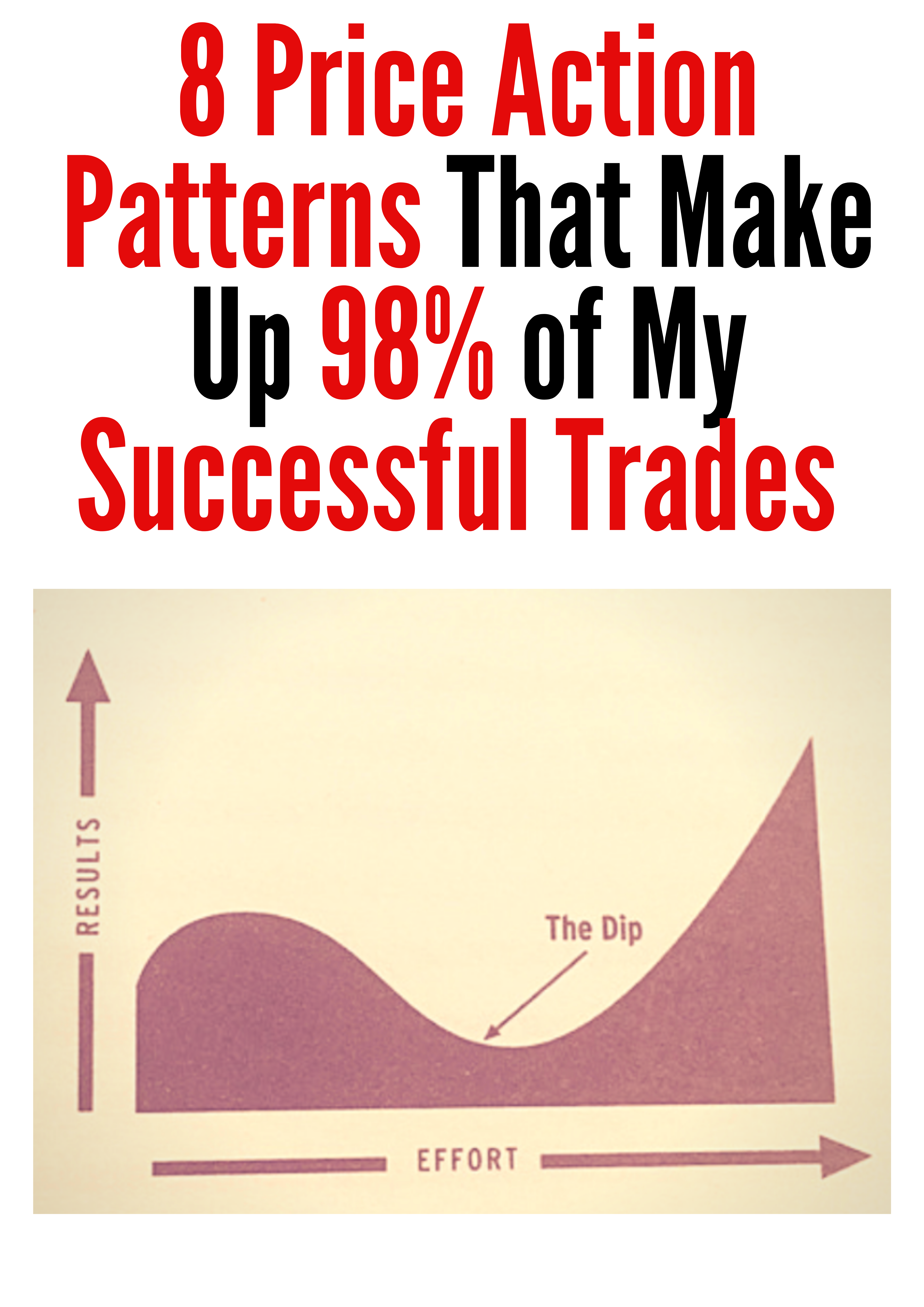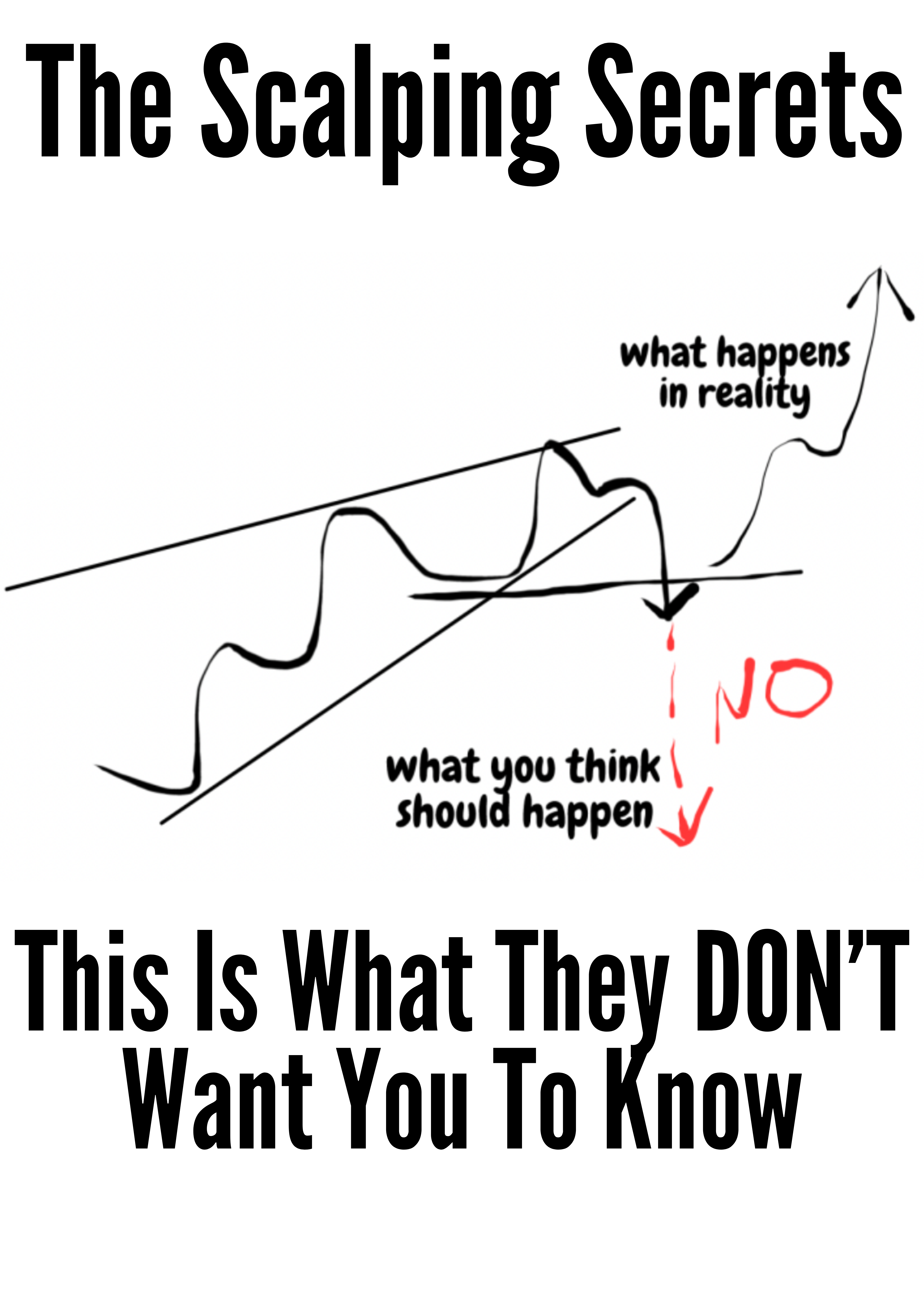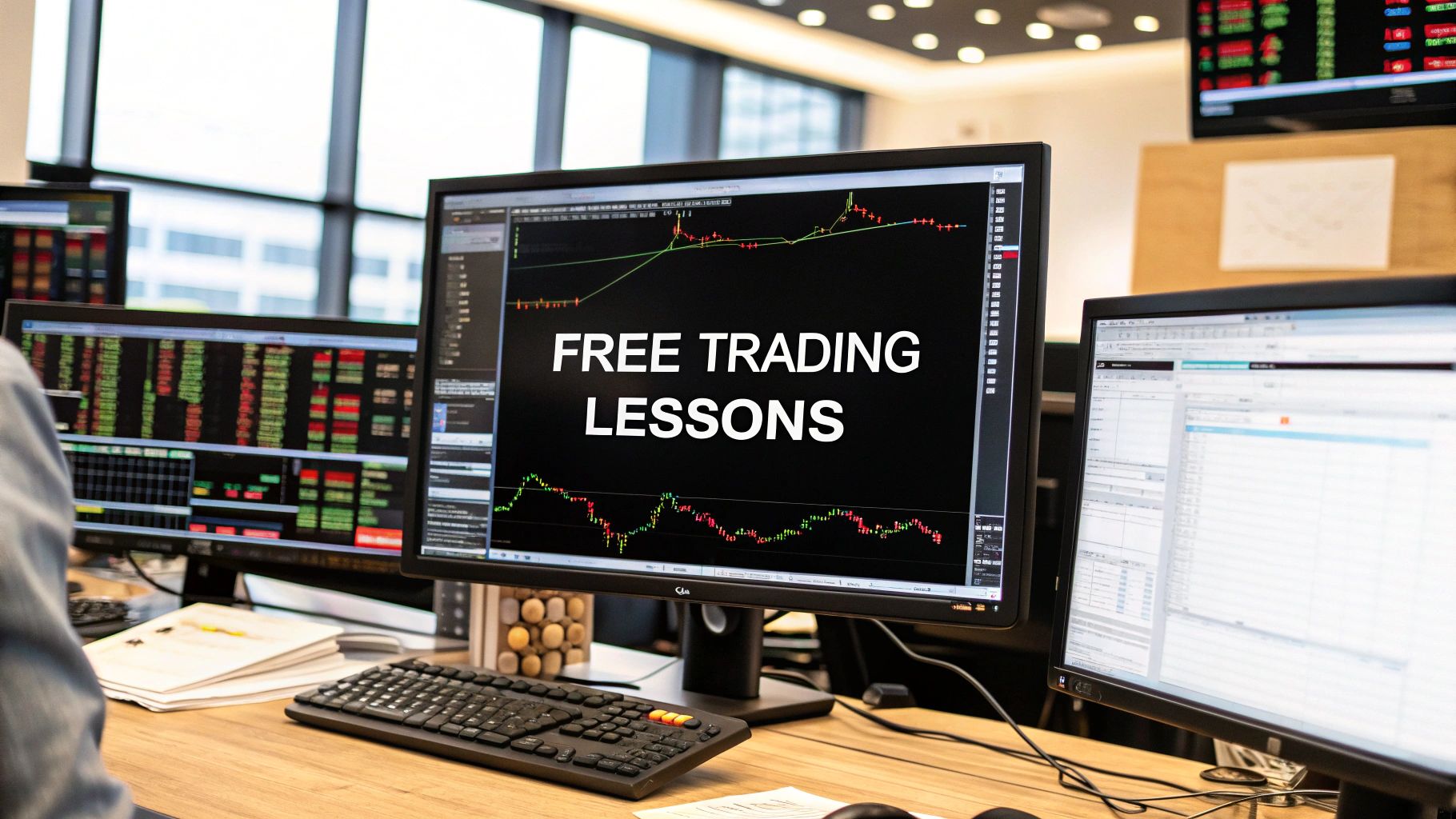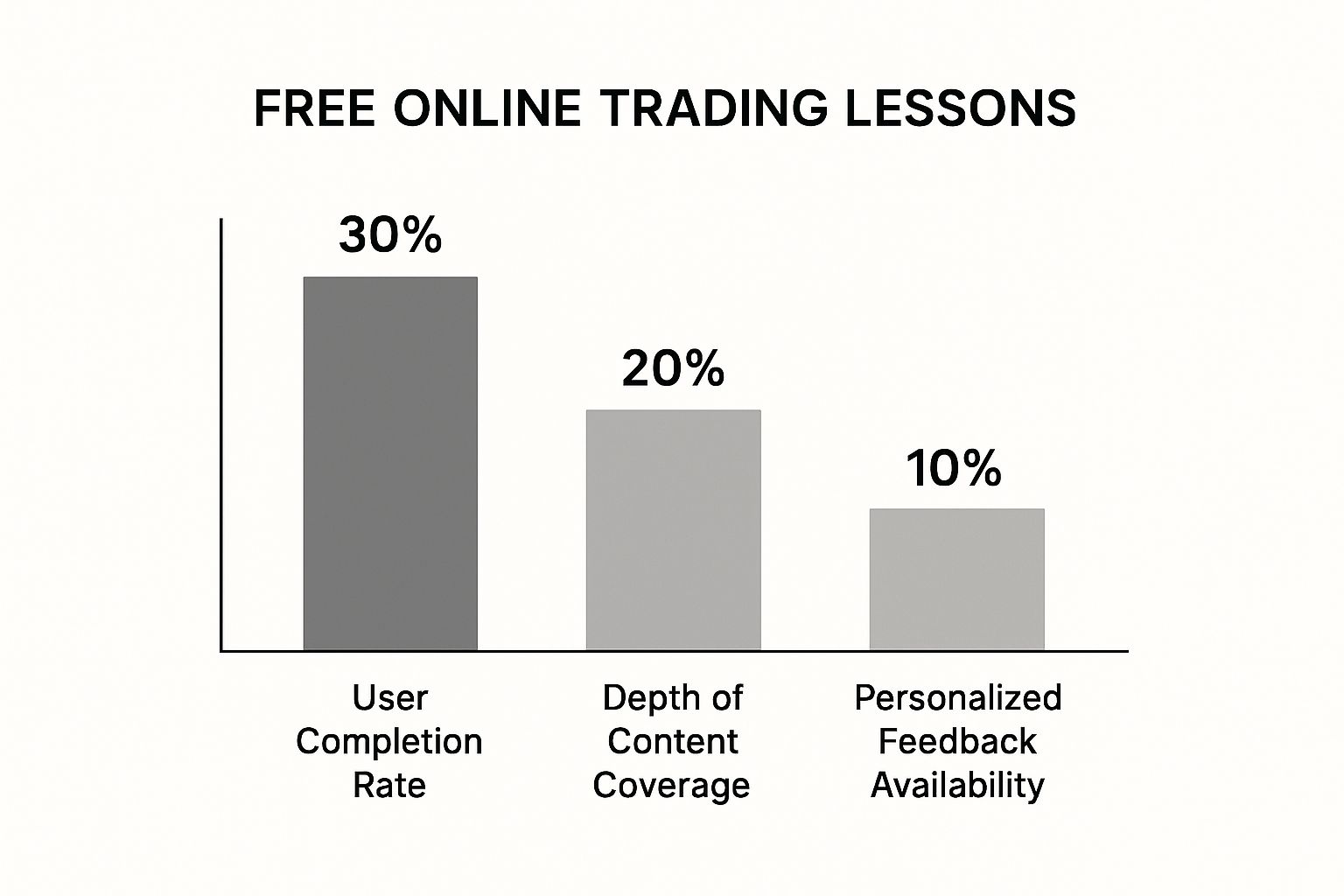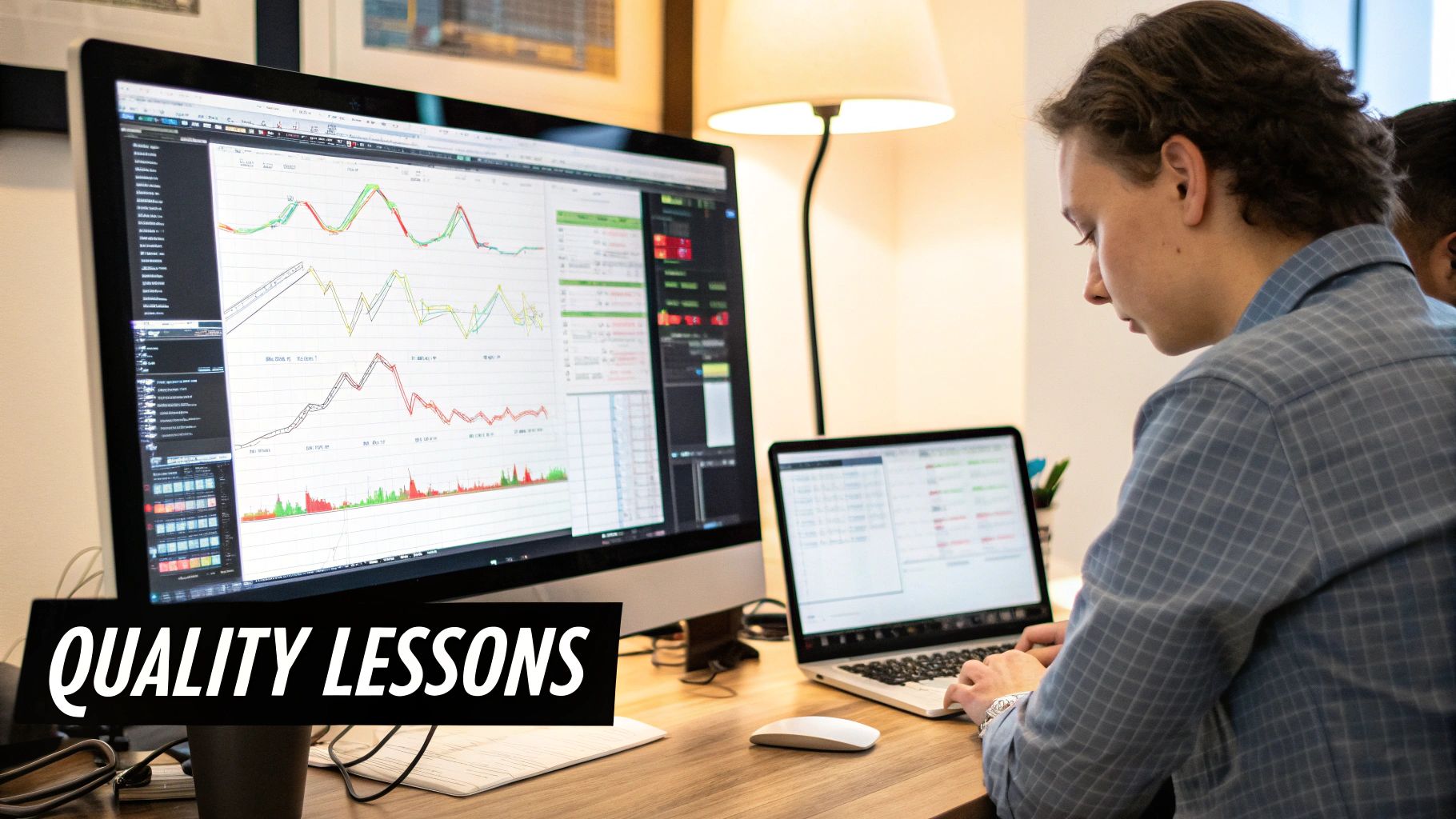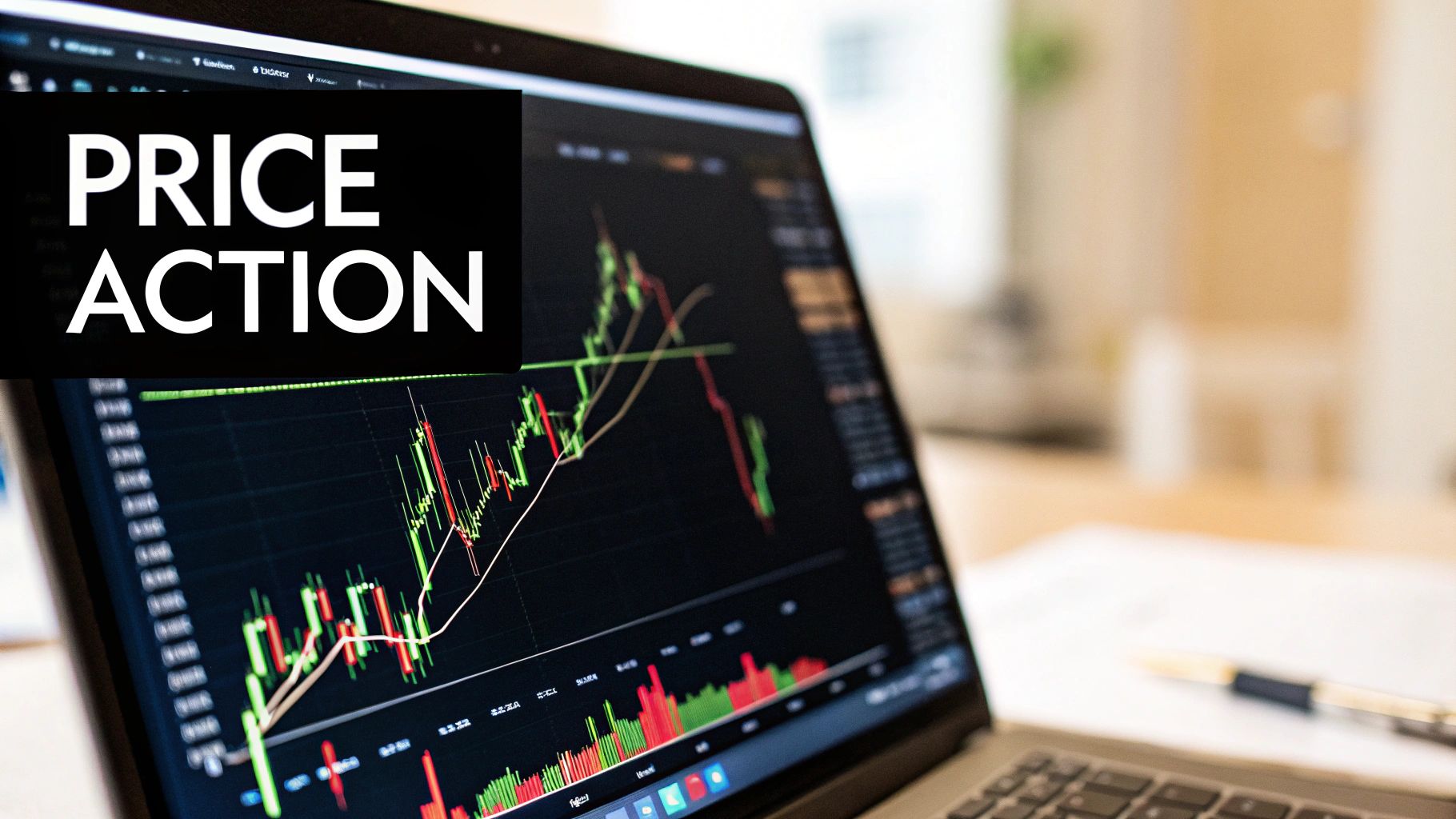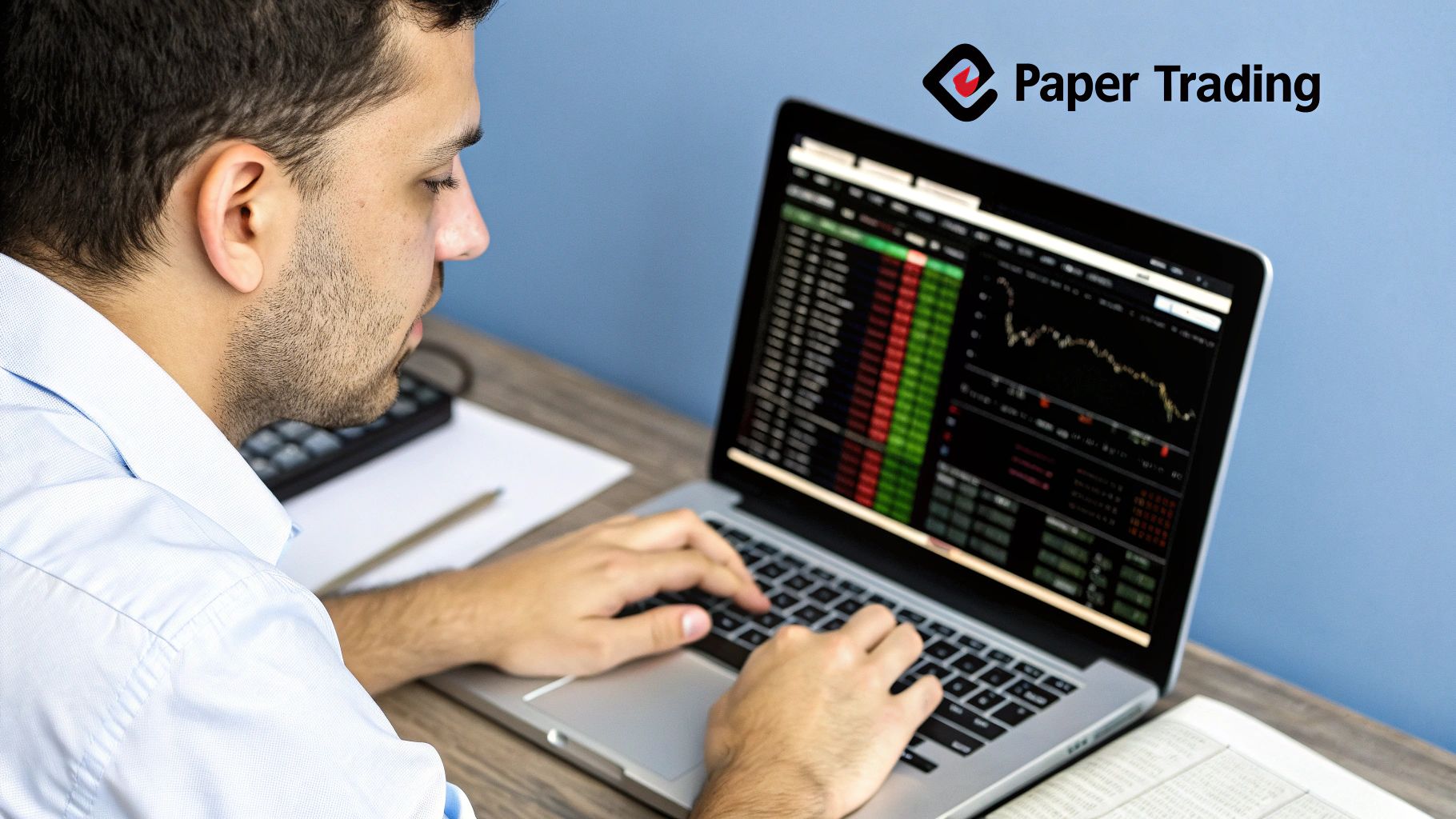Your Guide to Free Online Trading Lessons
The internet is drowning in offers for free online trading lessons, all promising you'll master the markets in no time. But what's the real deal with these courses? Before you pour hours into watching videos and reading articles, let's have a frank discussion about what free education can—and absolutely cannot—do for your trading.
What to Realistically Expect from Free Trading Education
Jumping into the trading world with free resources is a smart first move, but you have to know its limits. I've seen countless aspiring traders get stuck right at the beginning, completely overwhelmed by scattered content with no clear path forward. It's a quick recipe for frustration, and frankly, it's why most people give up.
The biggest problem is the chaos of it all. You'll find a great video on candlestick patterns, but with zero context on how that single piece fits into a complete trading strategy. Learning this way is like trying to build a puzzle with pieces from a dozen different boxes—you'll never see the full picture.
The Motivation Gap in Free Learning
Here's something else to consider: the motivation problem. When something is free, there’s no skin in the game. It’s just too easy to lose focus or quit when things get tough. This isn’t just a hunch; it's a well-known pattern in online learning.
A 2025 global analysis found that a staggering 90% of students who signed up for free online trading lessons never actually finished them. The researchers pointed to a lack of structured accountability and almost no real instructor engagement. Without that push, it's tough to persevere through the more complex concepts. You can get more details on this trend and a solid free vs. paid course comparison over at TradingShastra.
Key Takeaway: Think of free lessons as the library, not the classroom. They're a fantastic starting point for foundational knowledge, but they rarely provide the structure, accountability, and depth needed to build consistent, long-term trading skills.
Visualizing the Limitations of Free Courses
This infographic paints a pretty clear picture of where free online trading lessons typically fall short, especially when it comes to completion rates, content depth, and getting any kind of personal support.
The data makes it obvious: while access is easy, the things that actually build skill—like feedback and comprehensive material—are usually missing. Without someone experienced to guide you, how do you know if you're applying a concept correctly? Worse, you might be cementing bad habits without even realizing it. This is exactly where so many self-taught traders hit a wall they just can't seem to break through.
Finding Quality Free Online Trading Lessons
Trying to find good, free trading lessons online can feel like digging for gold. There's a mountain of content out there, but most of it isn't worth your time. The real challenge isn't just finding any information; it’s about finding credible sources that teach you a solid foundation instead of bad habits that will cost you later.
Think of free resources as belonging to a few different categories. Each one has its place, and understanding the pros and cons helps you pick and choose what you actually need to build a reliable learning toolkit.
Vetting Your Educational Sources
Before you invest a single minute into a course or tutorial, you have to learn how to vet the instructor. A proven track record is absolutely non-negotiable. Look for educators who are transparent about their trading style and don't hide behind a wall of confusing jargon.
In my experience, the best teachers are obsessed with risk management. They spend just as much time talking about how to protect your capital as they do on fancy entry signals.
On the flip side, you need to spot the red flags a mile away. Anyone promising guaranteed profits or flashing a flashy lifestyle as their main credential is a major warning sign. That’s just marketing designed to sell a dream, not provide a real education. A genuine mentor will share both their wins and their losses because there's a lesson in both.
Expert Tip: A credible teacher empowers you to think for yourself. They won't push some "secret" indicator or a black-box system. They teach principles—like price action—that you can apply to any market, on any timeframe, to make your own informed decisions.
Comparing Types of Free Trading Resources
Not all free content is created equal. I've found that different formats serve different purposes as you're building up your skills. A webinar from a broker is great for getting the hang of their platform, while a trader's blog might offer deep insights into market psychology.
To help you sort through the noise, here’s a quick breakdown of the most common formats.
Comparing Types of Free Trading Resources
| Resource Type | Primary Benefit | Potential Drawback |
|---|---|---|
| Broker Webinars | Great for learning a specific platform's tools and features. | Often includes a subtle sales pitch for their services. |
| YouTube Channels | Offers a wide variety of strategies and real-time analysis. | Quality varies wildly; many channels lack depth. |
| Expert Blogs | Provides in-depth articles on specific topics like psychology. | Can be inconsistent and may not follow a structured path. |
| Free Course Samples | Gives a taste of a structured curriculum and teaching style. | Designed to upsell you into the full paid program. |
While there are hundreds of so-called "free courses" out there, their real impact can be limited. Analysts even estimate that in 2025, less than 5% of people who start a free course will ever move past the basic concepts. Why? Because most of them lack the structure needed for true mastery. To see what a truly valuable free resource looks like, check out the tutorials at Free Online Trading Education.
Building your trading education is about creating a strategic mix. Use free lessons to get your feet wet and grasp the fundamentals, but always stay critical of the source. By focusing on instructors who prioritize the trading process over empty promises, you'll build a foundation you can actually trust.
Focusing on the Core Skill of Price Action
So many beginner courses make the mistake of throwing a dizzying array of complex indicators at you. This just leads to a cluttered chart and, frankly, a whole lot of confusion.
There’s a much cleaner, more effective way to approach the markets: learning the language of the market itself. I’m talking about price action. This is the art and science of reading a chart based purely on price movement, without leaning on lagging indicators that only tell you what's already happened.
Think of it this way: indicators are like a weather report telling you it rained yesterday. Price action is like looking outside and seeing the wet pavement with your own eyes. It’s direct, it's immediate, and it tells you what the market is doing right now. Master this, and you can analyze any market on any timeframe.
Understanding Support and Resistance
At the heart of all price action trading is the ability to spot key levels where the market has historically hit a wall. We call these levels support and resistance.
- Support: Picture this as a floor. It’s a price level where a downtrend is expected to pause or reverse because buyers are stepping in.
- Resistance: This is the ceiling. It’s a price level where an uptrend is likely to stall as sellers take control.
By simply drawing horizontal lines on your chart at these major turning points, you start to create a map of the market's battlefield. These levels are high-probability zones where you can anticipate reactions and look for potential trade setups. A strong bounce off a support level, for instance, could be a great signal to look for a buying opportunity.
Trader’s Insight: The more times a support or resistance level is tested and holds firm, the more significant it becomes in the eyes of other traders. When one of these established levels finally breaks, it often signals the start of a powerful, sustained move.
Identifying Trends and Interpreting Candlesticks
Another pillar of price action is identifying the dominant trend. Is the market in an uptrend (making a series of higher highs and higher lows)? A downtrend (lower highs and lower lows)? Or is it just chopping sideways in a range? Trading with the trend is one of the oldest and most reliable principles in this business for a reason.
To spot these trends and, just as importantly, potential reversals, we look to candlestick patterns. Each candle on your chart tells a story about the fight between buyers and sellers over a specific period.
For example, you might see:
- A bullish engulfing pattern: This occurs when a big green candle completely swallows the previous red candle, often signaling a powerful shift in momentum to the upside.
- A pin bar (also called a hammer): This candle has a long lower wick, showing that buyers aggressively rejected lower prices and pushed the market back up. It’s a classic sign of bullish strength.
You don’t need to memorize hundreds of fancy-named patterns. The key is to focus on a few powerful ones and, more importantly, understand the psychology behind them. This lets you read market sentiment right off the chart.
By mastering these core concepts, you build a trading strategy that stands on its own, without relying on anyone else's "magic" system. For a deeper look at these techniques with more chart examples, check out this comprehensive guide on how to trade with price action.
How to Build Your First Trading Plan
So you've learned to spot a great price action setup from some free online lessons. That's a fantastic start, but it's only half the battle.
Knowing what a good trade looks like is one thing. Having a repeatable system to execute it consistently is something else entirely. This is where your trading plan comes in. Think of it as the bridge between your knowledge and your actual trading results.
A trading plan isn't just a loose set of ideas. It's your personal, concrete rulebook for navigating the markets. It dictates exactly what you'll do, when you'll do it, and why. The goal is to take emotion, guesswork, and impulse out of the equation.
Without a plan, you're not trading—you're gambling. You might get lucky here and there, but you'll never achieve the consistency that separates professionals from amateurs. Building this plan is the most critical step you'll take after learning the basics.
Defining Your Trading Style and Rules
First things first: who are you as a trader? Your plan has to fit your personality and lifestyle.
Are you a day trader, someone who lives for the fast pace of opening and closing positions within a single day? Or does the sound of swing trading—holding positions for several days or weeks to catch a larger market move—appeal more to you?
Your answer shapes everything. It determines the timeframes you'll analyze, the patterns you'll hunt for, and how often you'll be in the market.
Once you know your style, it's time to build your defense. This means setting non-negotiable risk management rules. I can't stress this enough: this is the part of your plan that keeps you in the game long enough to succeed. Your rules need to be crystal clear.
- The 1% Rule: This is a classic for a reason. Never risk more than 1% of your total account balance on a single trade. On a $5,000 account, that means your maximum loss on any given trade is just $50. Simple, but powerful.
- Maximum Daily Loss: Everyone has bad days. The key is to cap the damage. For example, you might decide that if you lose 3% of your account in one day, you shut everything down. No revenge trading. No exceptions.
- Risk-to-Reward Ratio: Only enter trades where your potential profit is at least double your potential loss (a 1:2 ratio). This gives you a mathematical edge over time.
Crucial Takeaway: Your risk management rules are your shield. They are the only thing standing between you and a catastrophic, account-blowing loss. A trading plan without them is just a wish list.
Establishing Entry and Exit Criteria
Now we get into the nitty-gritty of your strategy. What exactly has to happen on the chart for you to click the "buy" or "sell" button?
Don't be vague. "I'll buy on support" isn't a rule; it's an idea. A real rule is precise: "I will enter a long position only when a bullish pin bar forms directly at a pre-identified daily support level." See the difference?
Your exit criteria are just as vital. For every single trade, you must define two exits before you ever enter:
- Your Stop-Loss: The exact price where you'll get out if the trade moves against you. This protects your capital.
- Your Profit Target: The price where you'll exit to lock in your gains.
Defining these rules in advance removes in-the-moment decision-making and turns abstract concepts from your free online trading lessons into a disciplined, repeatable process.
To get started, it helps to use a structured framework. A detailed trading plan template can walk you through creating your own personalized rulebook, ensuring you don't miss any critical components. Putting your rules in writing is the first real step toward consistent trading.
Practice Trading Without Risking Real Money
The true test for any new trader isn't memorizing patterns; it’s moving from theory to the messy, unpredictable reality of a live market. This is where so many free video courses fall flat. You can know every candlestick formation by heart, but that won't prepare you for the psychological gut-punch of managing a live trade.
This is exactly why practice trading is non-negotiable. Using a demo account or a paper trading simulator is the essential bridge between learning and actually earning. These are completely risk-free environments, offered by nearly every reputable broker, that let you test your strategies with virtual money on real-time market data.
Setting Up Your Risk-Free Sandbox
Getting started couldn't be simpler. Most online brokers give you a free demo account when you sign up, handing you a safe space to apply everything you've learned. The goal here isn't to rack up a million in virtual dollars—it's to build real confidence and hammer out a solid process.
Don't just click buttons randomly. Your objectives in a demo account should be crystal clear:
- Test your trading plan: Do your entry and exit rules actually hold up under live market conditions?
- Master your platform: Get comfortable placing orders, setting stop-losses, and managing your positions without fumbling around.
- Experience market psychology: Pay attention to how you feel when a trade goes against you, even with fake money. This is a sneak peek at the real emotional rollercoaster waiting for you.
Despite the flood of free online trading lessons, a huge number of new traders still can't find profitability. A 2025 industry survey was quite revealing: fewer than 10% of retail traders who relied only on free content managed to stay profitable over a 12-month period. That number really highlights the gap that hands-on practice fills—a gap that free courses rarely address.
Key Insight: Treat your practice account exactly like it's real money. Follow every rule in your trading plan, especially your risk management limits. The disciplined habits you build in a simulated environment are what will carry you through the live market.
From Simulation to Real-World Application
Paper trading is the single most important step for building the confidence you need to put actual capital on the line. It's your chance to make all the rookie mistakes without the financial sting, learn from them, and slowly prove to yourself that your strategy actually has an edge.
This is where abstract knowledge becomes a tangible skill. If you're new to the idea, understanding what paper trading is and how to use it effectively is a critical piece of your education. By consistently executing your plan in a practice setting, you build the discipline needed to perform when it really counts.
Common Questions About Free Trading Lessons
When you're first dipping your toes into the trading world, all the free education out there can feel like both a blessing and a curse. It's exciting, but it's also overwhelming. Over the years, I've noticed aspiring traders tend to hit the same roadblocks and ask the same questions. Let's clear the air on some of the most common ones I hear.
Can You Become Profitable Using Only Free Lessons?
Honestly, it's a long shot. While not technically impossible, trying to build a consistently profitable trading career on free content alone is an incredibly tough path.
Think of free lessons as the perfect way to build your base. They are fantastic for getting the lingo down, learning basic chart patterns, and understanding the core principles of analysis without risking a penny. But they almost always stop short of what truly matters: structured mentorship, advanced risk models, and the psychological coaching that separates the pros from the amateurs.
Every successful trader I know started with free content. It was their launchpad. But eventually, they all invested in a more comprehensive, structured education to really sharpen their edge.
What Is the Most Important Topic to Master First?
This one's easy: risk management. It's not the sexiest topic, and it doesn't have the allure of a secret entry strategy, but it's the bedrock of a trading career. So many free courses will dazzle you with entry signals but barely touch on the one skill that actually keeps you in the game—protecting your capital.
You should aggressively prioritize any free online trading lessons that hammer home these concepts:
- Position Sizing: Figuring out exactly how much you should risk on any single trade.
- Stop-Losses: Knowing precisely where to get out when a trade goes against you.
- Risk-to-Reward Ratios: Making sure your potential winners are big enough to justify the risk you're taking.
You could have the most accurate entry signal on the planet, but it means absolutely nothing if one bad trade can blow up your account. Mastering risk is how you survive long enough to get good.
You can't control what the market will do next, but you can always control how much you're willing to lose. That's the core of professional trading.
How Can I Spot a Legit Free Trading Course?
Look for educators who are obsessed with the process over profits. A credible instructor will constantly talk about risk management, trading psychology, and the importance of developing a systematic approach to the markets.
Be extremely wary of anyone promising guaranteed returns, flexing a flashy lifestyle as their main credential, or pushing some magical, "secret" indicator. A real teacher wants to empower you to think for yourself and trade independently, not make you dependent on their signals. They'll be transparent—often showing their losses to teach a valuable lesson, not just their winners.
At Colibri Trader, we focus on building real-world skills through a proven, price-action based approach. Take our free Trading Potential Quiz and get instant access to the first two chapters of our Amazon bestselling book to see the difference for yourself. Start your journey here.

